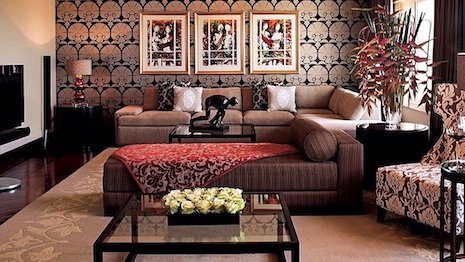As China has affirmed its place as one of the most influential luxury markets, India’s luxury business has seen double-digit growth and is likely to become one of the most valuable emerging markets.
Indian affluents are likely to increase spending across luxury categories, including fashion and travel, according to Agility Research’s 2019 Affluent Insights study. As infrastructure in India continues to improve, the domestic luxury market is likely to see significant growth, similar to the evolution of the Chinese luxury market in recent years.
“China and India are both very old economies with the biggest populations in the world,” said Amrita Banta, managing director at Agility Research & Strategy, Singapore. “The affluent in both countries have a very different history and traditionally spend differently.”
Asian affluents
Although affluent Chinese consumers tend to equate luxury with the quality of goods and services, affluent Indians associate luxury with a high quality of life and financial freedom.
Four in five affluents in India expect goods from luxury brands to be recognizable enough to elevate their social status, emphasizing their interest in social gratification through purchases.

Consumers in India plan to increase jewelry spending. Image credit: Forevermark
Nonetheless, 61 percent of affluent Indians prefer luxury items from local designers. Chinese consumers prefer to purchase goods from classic luxury brands including Chanel, Dior and Gucci.
“Chinese affluent have been spending on European and American brands, including the very well-known ones, for over a decade,” Ms. Banta said. “Indians are also beginning to consume classic Western luxury brands in fashion and jewelry more than before, which is a big opportunity for the brands.”
Consumers in both countries also plan to spend more on jewelry, automobiles and travel.
Indians are spending more on travel than any other Asian nationality, according to Agility. Two-thirds of affluent Indians “strongly agree” to increase travel spending in 2019, compared to 57 percent of affluent Chinese.
Although Chinese travelers are beginning to diversify their travel activities (see story), affluent Indians still prefer leisure activities such as sightseeing and shopping. Reflecting their desire to travel for luxury rather than experience, Indian consumers are spending more on accommodations, including hotels and transportation.

Travelers from India are spending more on luxury hotels. Image credit: Taj Hotels
A substantial millennial population should also compel luxury brands to pay more attention to India.
Together, the millennial populations in China and India account for almost half of millennials worldwide. Indian millennials edge out Chinese millennials, 440 million to 415 million.
“The millennial population of these two countries account for 47 percent of the global millennial population,” Ms. Banta said. “Millennials are fueling the demand for premium goods and are very aspirational about brands.”
Luxury in India
The luxury market in India remains smaller than China’s, but is poised for a strong boost.
India is set to experience the steepest increase in ultra-affluent individuals, as the wealthy population climbs 39 percent, according to Knight Frank’s annual Wealth Report. Asia is expected to see a 24 percent uptick in ultra-affluent individuals over the next five years, outpacing Europe and North America (see story).
As consumption in India continues to grow, luxury brands may do well to invest more resources in marketing and selling in the market. Some brands are already leading the way.
For instance, De Beers Group’s Forevermark partnered with advertising agency J. Walter Thompson India for a campaign centered on the self-purchasing trend.
The #BetterHalfWithinMe campaign was created with Indian women in mind and spotlights half-carat diamonds that women buy for themselves, as opposed to jewelry that is received as a gift. Women in India, and elsewhere, are enjoying more economic freedom and are more encouraged to find fulfillment in ways outside of the home (see story).
In the automotive space, Audi began a campaign to bring luxury vehicles to India through a partnership with Zoomcar in 2017. Consumers are now able to book an Audi through Zoomcar’s mobile application and Web site, which offers hourly, daily, weekly and monthly reservations (see story).
“There are many luxury brands across categories that have been successful in India, especially in categories like premium auto, fine alcohol and wine and even hospitality,” Agility’s Ms. Banta said.
{"ct":"HzwvsyJHcovoEW\/MYR1oM9eXCpY\/HXZ5Co2b\/5RcR1Bb45qe0z+S\/sQM+YZ1+HZV7NilCFWDvmvhCXiViazyz\/sr3d43ivro3NqwWfhunC+nZRJGgaTIibnz9g8DRu\/Kzobe7ppY6z1hH0wgfpE9fjFlWFhSTUHXLUwHm64B4KZ0yszuGNvn9Dyf8x23zRhHftIegxK\/EvpmpbPmYmvwVFSiMo00XuxWBpU6kvF4lTxxD4kB5jpPYmGBopCK0SbIXoaQ2ejXFYWxGWLsuVpVF9hr6hTGJAtLZvLURk17+PXvet+xPlW8VAWJek6a5wWX4dxqlFolmbPHz6pe5o9L\/aNyllOscqIPYaCnpQIEfB+Yl8AcTdso5AsA+kIfnU8pShV\/fpqLAnYJFklx79KCmtirgYvnVF2gW9nZiWSc1MVrogPxEVHHmWpa9w7iC\/+pSLXVCnLsoMz8bgVkEM+WcrdUZlv8TV387vhiCg0SdKhN5KKfRV5PXLfC+\/N+Bs5ob9nUsHVPjri6FevcdRCoq8qZOlxr37hnggjFZubimOeNeH+qIs0c6Z1ZhaTJgYPqm6xUp7zApkwgkvgKTWwFd4BALq9LFnDC+AdGEwfn5V95d9DeDAsV37qRyw0XdPQ2DVcX5THep\/YKzzf9ZHH88cTb\/DnRAeyJAgLwAkN+809KdoAVpqN3IylW9g1vrfX+36bbwNFRbL3kkyyfNcQyjhws7OKljEO\/46wkbjl38Bw1w1l1ZvkOpXvfwPQiak51goCIehugQlEWPDMXm0Ui9Jm6zmkSagdIaeyfibN5e48EFVI2qkFmzfHoh1FP9vwty+CQhCqD53xaEXupCEjg+5sDm3eAUDp6AUf57RUxOVQhqA3+a2oJnEQkFIX\/lk6mCTm13KSxZeXWnLj7mtBm1OsARvMTTUHYC1WNI8Lp2xyK4Y\/G7cF3Y5R4y4K50YjJbKlRaHCnQYqvZFMW6bCQb4qgLDI0H6qWIDxCCR\/DKSGrF+yJOLcWj7GscRlK7GcRd+T4C+PSVxymKGi2H8Op6ZWwilfpJGvWZDdMqQaDBoVTMv9oRvxDMInu169WGe0g2g7ya4Sd5lb6fWHu937Q9mwmiWaYk9Q\/0PhI7mwB8ntBj+rYvNtxva0rUl0K7tbEgr\/7PT0ef1xp\/kpwg0Su88x4H+q2Bv9NDUbI4tsrQXQaKGB6V9f4Rt0SLUYtjSNZiVhOeDyaySJXaBfc9KYZK9mxzwZP7nuP4zH7kfy+N3mKeiREsuZaKK+RI7jNJtvuqcZZ0PZqoanoc5HiUnWu9rYwhm5mivShl3pZguMwMenx8ON5V4TZxYQMsvgYkMGjsShN\/r4jbCxl+6QFAInjW5dt2aWZ+bNcfT63FIhZ+PCqXYSxEZoX4ThSxPz0X07iSfIPj6F2m4anJ4gUr1gZk\/Vd+qZS9FdV2Fub\/OLvwn+8uy2dFeKSuW82mgDLqhHutbdKH0gnAO8FktCywWE9UZcZ9YJNV20PG4bm66pWRGGv0\/d3\/hD7E7zMamhkuo9iZPKBqtlIJ5J3+SwGS2s4st11dX2l+Fks9DD+6Dd+tLVP6jlU4A0L6vJRH2XD2bnzgQWqJypxxe3sYd9yMgAepv0j116gepavB5CXfvLdq9IGeY3+cV5pKdBahHvvVRSZMc2aJgKrs7wAad4vCuy3GRLdAzddpqytheXshO5a7VLaWsby4Jdjf78SOkUHkOMA+Ww4SiSbKNdHzGc7y0POpJ3aL7J1pOg33l2HCVPNUimcmyxuuiFhkW0rvboCnuTnpcGOhdZBDWH3lNDNwh6Bf75BIngUG7zXehdoYTmUxomUUJbjW66njeYDJaUPq3irXmdKz+VV8nIykprj7+tnsMr8njizLap477pCRktTaefJwIJptxIq7TURgTKexPmgRn\/IE13OVjurgi3tivXsri\/UPFwtufg3tsbE+OMiafGfJLRN0liz2rruk1H\/8+KcDWxSliX7E09kNnImkkDzCpv\/U87EKwchgpR6pv2uo6nVLEoT2T5UeXmymg+fKnE\/D\/sS3\/8E0Ymw6c\/0sMhRoFLaGAKUVW60Xnpzj96C+jmVaI7\/SE8lkhN+bxG6kqLNbhzFjvpG+CnPjOvkn+zyQkp+DrIIIk6ZMgdYT24J8cKfIDfyXAIz49tN8yoFhBNANubjdokOup1NA25YmnBHeTdidm4lGkob7KiSYBhnOtw7uQJtzS85g6R1SbRSxuBpiEYfPy5xLzdsqUJ23L4chfrCu4hynIzsvcyu7R5wVvImk6Bn80WC6QNB9X++\/9abc+4+GlmPJ5FIeejNLUZlaC6buCHXBVMmX5aQHhutiD7TCsp1aJuwTlMmcFBjlmtwFb4aoSH76dTHYk5rYudclNUH\/ONzbpAe7N5X+czdD1VU8wbhEHO5gLAWWz72UNaElVG4tW4xA4YDjjshkfKHmxSJmHcIezoXKpxR6kKS0l\/JAtm\/dfSfsgi5aDzdMFtIguGG7g6M9pURhnnzQARHpvDb7+RmjEDR\/\/C8etRyHDvnOKLCUSf2sbcp6sppUqVHHYrZr4hJTuUOIxx+PB6+2RlHXa1C3Cb1KerejWvnim48Eh1TAmH+93YwKK0q9OsaCC006Zy0VL8vS4q+RuXhR5VC\/JV\/jCXF+LFs71jTiOQ8YuwFWSnwmrdSrS2tquti0m\/WPHDWW757niNl8l323GMdR2D33gIo0vbZ2Hf7A9WSVCKHCbBo2A8ibnM2t9d\/dO8y2FDOgJgB4fDP7C67Ey\/45F1s2s0PwvcCnIptWWXu0TnloFkPf2axZ9mkNDIiiXwdYkoCDCgDV9+wogxmDdW2WFhffRsYqNpNZfMHXxKxUwZu1iR5bIThx1rqtTUwV\/2bOcM25pD\/\/RGoRxqJeb5Y3dN31w6V72O1HjHTAIVwYf0OvfZAbimTdN\/wfYIvE3Ia98vvZ08xbMFhPOIjs9wUT+SXLTZzlBiRFJ6t2LtnD5uJ57iQZhye+Rw2sYeUN6iipvHskocLZBQjSbCQyzFvL6jzSsDV+M\/rS6ioNnbFa6lh1vbUZG1l+0yrxI836jBdsjpB5HuH5NsbVtIqTP4sqyvURSNCv7sWIvrKEmcgA4IIxUjbKpPwWdFqXtUAubg0SEyKwCHOfww6MsvNv\/RBiLSKHa+ckzaJv3tqDHhwCWdQxoxvCK\/UKDjviChzzYa5Y1IdYO1nh0NKzCPhJTq+J7eUoqOo4fhQ4KIp1wRqGugmzCzHgJ7IcBEOXfVPKUdurcPVywVN7Vr278YPHsavuWsn7iZxya9\/mHORr5Jled4DYiabtDYTxfapAdNH2\/I5kAa3PWvHYs8BUHZFtxSHNFgBKX4wsWnr+ckw49Eq5SaJo37PAFcckQ1nBjB1sTPcv7LoaUz+3bNzkVxd1\/hJ4t3jk1Ng0IFZcjak5xtIM5nISRXPbV2kazYzrCZE0lY2Lh18S5cfYItkgNqUlUPZ2KbR64F7hycT6ceiKwp6sonEKS8FvpxHYq\/IRigEPxIFnPDXMKvSzZPax\/61a1uSewAl6ojmFjjZD8SFVOLQV6Bh6yQ2yak7Ge7EJdQG0dhgY0d2QMpWsjAmm90fGk8ByQuCkMujiypXbF\/+zXdquwnb8bn+3GwMhlUrIkjjanO6pYjY16hsO4KNxGO7DC4O9CLnBZseRkomXAMMdi3tjoiKTy7mehVXllMu6XFDr\/gT3+pKZ9AhnTOkMETHC4GzOoq\/u4cq+2PswDGKHaequ2lk0uOt\/o154iN1vBV3bPDiNuWC\/l4sX5wM\/D\/yDkv+l0fI7JYgs1GTPID0VMF2xxPyWSeiyKUu3aB2Y5mbPoOC37EzG2fDP8vXhhIV\/1d8cljRhZDplk7o6wm0PLqKIsAuQC3IPo8vP0jnauDl7Ka5Mlu\/gJ3NwuVFh4KwfvPHs8KR2dzjS6uaDWcKFMJbOnLGhxz1+5pcH5T6fWFZeQn9hZxp19x66Cyt7sAoiNIJqbdkQUn3xV6wNDoSjg7En28fE1sRDxjWztJopUf43Wr9746WDphaMwg\/cVim5s5cceLGCVuzY0li7vPNipInkFPCyBCemyZo+qgpX+mbdZzUAyFkZ9XZmYT6dLU7DnQ4x8POKCYxRYI+c8yzq\/WtcCGMu9U42t0uO6X4iTpf6q27948qDakDwBj0n3cL1lHyrZUo2yvxz5k4N0xidayX0Pz+Zuz\/Qe1Yc31PxO9goOsF9BvR0rVMXAyouNjH57KkaQTTNQQvHdEBtXEE128Z0C5tIPdUQp2agKwS\/S+PJvHPIySifVG47p\/HxypdhQ6uMnbm6QQc1zgb4atfzZm4AKdSuDukVuhXNkBm+Cn+eViOvM\/WOS6oxJEN\/0DTasJRtX6QH\/V2R53pbE0MoKeTUMnygnD2EyZnmw76R2Psojd0ruCTQ+KhPlduZ1EGJ\/NN5IByUSX6+9TrYZ9uuQVRYGQwOa43t0BNOcEdH2pLy7XKJpW8VsPKzA2IPVx3GRhgjOMIwGzcNQOptqZpjhDpC7zC1WBEVHmHWH1K1Y53rmdVwaLMvgB0f10KA9HvPHrr0TyzQlYumX5gWqTJZsJD+56RqvHTIG8pMrIJQbOz2fYRt8SNc43+CD9qp9kXdRUSYgQgazXFROzsZTeUhDlPm4lu+6EYBuHjavWFOmKWfggbzJDSHz5jUNVki1UQmnPb7tBxCuh8mBzbWtFOqlOWLGCK5ih90GDr5UQCCf8aOYWZQcrwmFqW7kQJjmhCJEnAQeEcyCeVAkc3lhIGxWZVJ7on5qB9StG9GA6jRGewV9ETKJUK1H70BVlQ8Fdnkg6oR4\/F7xXGsmEUmGUCfoZ2GAb+Odi9JbNPBj3QbGjvf2az5qv1khqa0bEfd8xmNIIWfuXjLOaDa+724Y7zTCsl80t5v4rK\/5F\/fp3inGeLIV0WGHJCQoJn8zCs5MgmQ1UPEGQxNMv2RDe+lsj94heJaYiDsc8e7WF0t4rSubTj+UfEadS1Zxle6+rVBAcY1a\/3LO03NweN0LZ68Sxc90WEeOMq\/wgnKGS9LWDv1vaiM+XtpYtw0xmZkD+y+RLaoCHSjhDXsgDUUxfXYdN1kTyNUnSG\/3R5ksERcNbjxauKDamc3u2+jXuaAjsbqNxDn7OeohZ4iozlH6MpSr2dx5ZQkpvKW+GzvMjj5JCC8VNXtAPr+ZlT6n5myos6icqHmBe+FQXDC0Zogq9\/It2\/RmNRgJJIBga+aGzbqOv0+MM4u0ixO33JUbEXO9Nr3komo0LVv2N\/sZLaEY+fQSJnrGfW3RALvyIy9R5yHIblDPktZ6FgF11JeoTl7CGrMd1ZI0JmfwJb2TTjlywHtCVLYZCs7TydyHex\/JH0wl\/r6Ze1r94k818iqJXoH+YtOckB6lz\/Vk4l4+k6Nv4VoM5JoS0MJoKEpX28SFenk\/F1vqZV4nyymX9PFxMxI5X8Ek\/wpWqDxmzQgFf6WIghlYWqcHtN4QCSRqqlFY0mZHe0a9Hyavgc9fu2+KZTpj9W2mQLgJ4Sdx7v3AG86EB6k+c6CzjlNF5kNCghi3HqlWOyPTXAWoWiKECRO\/+7CWJ0rIHxzIEzdYVmo7vVGKRXZfMSxRFufWALdUx78iYDCIUwEe7YyqCwNJAD5ko1fpDGti5+SexyczAiMNAhxV6PkbqJchE5vTPPNUNX+WN6jwDjRVfoR+oV9aLvVJn2FUJ+AQy6E\/t0mXshbGhnnYpmcqRAlz0qaoZuJkFLytEKZJcdREf\/GgeBPNTzi1OIVpycHIAcZvVywYaAg4UO0ZjlgDOs\/YabzXHQvpnj01+\/73Jt8hv+zClt3CypK6d8Xes54fXoq6alzaevDqfEhAIh+wX4ooo5RM+URaPbxycwN66lZFHNr317gzuwoU61QfXXMq3rhY3sQWmyUvnjTnzT6sOU6J1pGPHeP6ArqF0gNw8ESdlPt59qFZipMVp4FKiOZ0p5glAkgH6t\/TQuAf\/HDPI6TxXlStkhPTP5B1jVCEP1B\/8biOqxij3nsiehKkJVE11ZXI9caAXYtklA8bqr5pWmXMAjoD6K8+WEdnVXLIc92XhqaMUHJLjlwJUlC7t6wbIrKWzEcNNLIDPe3Z3JGnT2Bt5rCs\/wTRA+NlxdfSIadqpob4F01HVSh986oMM1dsYNguVgmrbmqVTVlaHfQ\/U5+xilXNR7krf1WJXxJdQElsxTvjpJq5GEciohi9KUG1IbEQR3pjKBVXiN+sNwNEJ\/XfwBIlZAWuIjjgtN0l+6L1WYwgKPrpvoWi5E0NUYDmEfB8kl3OJPyCekX8JtsruRiYJf1OxCwmET5phU8Y697D8xilvunbphFFImas\/EI3U63sPZOUD6eZkA79BcH2v2ozknitzl\/9ByaU34SRbP1zUVNFGW5CEQftEimVWkAuI2hH61y5ZP\/T2OfYvLiwIS\/GGjWOZBR+GAYmyAglaGIuZtMCuCjsxQVUqeuWXI47TjkT9\/r6m4qybhvAlLfS7tc014wsVaI3IWx\/qlVHZRSe+XXkLr14HQkd2JFkd6ByD3Ishp7VQaeLH8lwZRjYWjgXeN9XhyDcp7RaaYWo\/hVgB4YBl0N8fkrvRjYOJpbWlZV8xtSUJ5zChpJQ1o9YmpGMh2j\/mlL75u3Gd0CRbnqdm9S1lHL7X4o7EeG2JpObvDqrWGnB\/uPJd3CC4ZxGitjp3fwaWWkW64fLN6KaTUJWwPOAcTyY8TEQHgd7nOwN3p3SKnfW3TA\/G4is93XV7IVNHu4KJDL6+YwIzZCKsrgdp7vRaBmHpjnVCNaZvMiAZ1cMIE+XXBG7nW5U+RnsMtMwjcTbmfKGvZfj6PeM0sdRUucryFBdyu8aAEAdhq6X9FL3ddrTOYpjc04sk3NCaLHcthXf4jGQGWaLkWhfNcKoPhjqmmn88benJqpwA\/tMBr9HspGoVHKmTPg9+fuZAzEG88LmkMTTpQeDU93CGjQrTOLC9AfK+Cp6GYVLKCx9D4NhlCzC6FzpF1Mtq+kK70skN9u3Fo\/tQNfk3W5iA8plkYuc8iz5IF7nZHS0+EMqKdtK+vBKgoPM9d2YrMpLZ54tjQttk3W\/5SiugciUPBwpZfoV0neZyBC++JP21Wzs0srTu1uQbAyilruFrW+gJebJ2slkiGVvXd0ng9ezAFTG784ezSdzxHL4Kv7N2NIgL323y+3+f1Pe7OptJUVLd0o0PEQQNUwt5zDRlb6OEAxuKxgwGjO5Hn0SAsZfCgPH0ygmB+ecCxY1H2OWYVHCCsloDHa5DhivD8cpv9fTTbcrR\/LjRy+OKvsaTSyn3gFMSHu8sSrrx79y00OBzC9leUmel10CcTk1B6HCC4jFY93Wcc2hW+ypI\/n8+j3M3je0OncXg4a2q2iJVjepNqUkl5Ftb19GBmziJskC73SePoTs3qhNwKNy1Q7OFbZC3njEc5onq\/0PvABW4deVko9Vby5u\/QsXa7B0ava8XEurvcsxwG5eDsiab3QyXYjzxr259Rq\/XgFtIzxfEqX1aPvvmDrslk+tj4uZ5aJXlCN0YHrUNlwUx4FOAc6S6+Q6RrT6DKcO3Z9mqQxuFiU+5dMPffYQAyA7xSNcKgTqTPlF3QRwliaVUYDYQue\/7GjBDqEqEVywrjKoAi0YWDNlXsWf+WuEj4uaArS10YZL+8o5YMzjMxds4yE2DV+QEHwlxHqxIKKBWhfnjfH9QJzCgXCCei6iUB+BxlcKUOBtPdAGuXtsaQymXC+n4Cl8kQ\/IzzS2F0\/oRPRtoYqXw9Pc44zHG5TEc0ycoa3x62OtnCxW4poeSqgtN8uQ32NjHoHxyfpDYVxH5zYx\/KH\/W1+zZ+Vrf5DpaIeoDRHtn3X6gsulcU4LYgv6SEg\/NeDloxuV98Ac+gWUtzINt9UGKIITeHYESyXGBBQZO7Q0HDlMUmOo8wh\/SgbffXef2uciIjhEZIoxmXRU9aQclGFYEwKFepgTCiRJmlAz1TWYuhd27JKTiEQUKQBn836wsq9faN2E3oQiNOu\/+\/JkaKp3nzi7OLLO0Wp64JaoThB63FhtJzuxHDKv86Pu8UnhFo7quw+gj7EJIgS19Rjc5GvKfuSmuXpXJedOGhzxcQwUZ7wkMBz1uMrgJcRGKbjQ\/E+nN4h07NCEkL0GptaRQlT3igQxS64Mm5lNs1BMCNF0fhyXdIo6KbL8pfu6iJG0igk1YkfQwzQUAe46eQsk+d4aDtMqthL\/q0m43JiMwEJzvi\/fMBdD1hnSYKVB\/7YjPnNFZt8ou8G6lJVvRhO7cSUsd4R+5Ph0HVqKyOuSu7O3QOQG+EtGE6jtOigdhii+8ZpeuAjCMvnu8HuAPsxOoVcQ1nV7orodVehTrzdQjNZUg6WRnR4gMOUbhJ53hKjcRlJjVti0e7ZOFQm\/YVY7E0DGwKNEALWjWU7RkKIXc3GDxgjsddr6bnwuTj","iv":"11b7594b48afc56c41ce1eac73e76d40","s":"df511d9ab01a80d3"}

 India is poised to become a valuable luxury market. Image credit: Taj Hotels
India is poised to become a valuable luxury market. Image credit: Taj Hotels